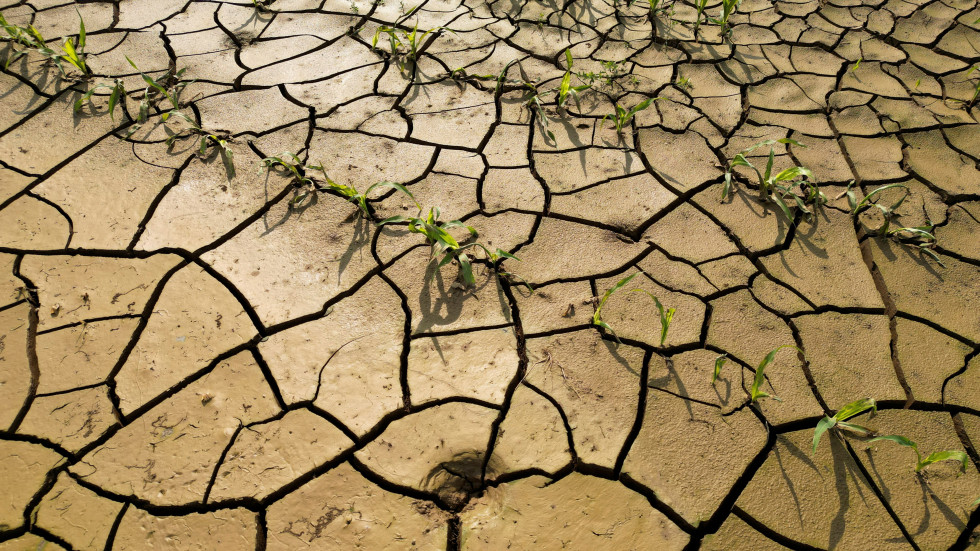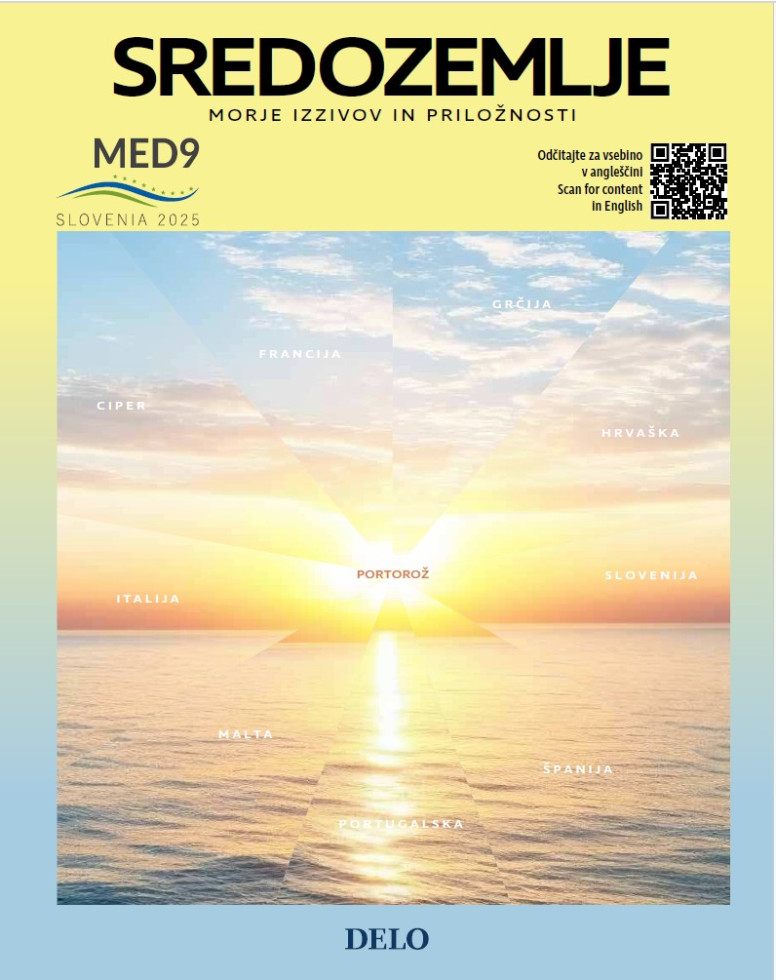The Mediterranean is facing threats from water scarcity and dependence on energy and food imports
Under high greenhouse gas emission scenarios, which assume continued growth even beyond 2100, the average temperature in the Mediterranean is expected to rise by six degrees Celsius by the end of the century. Droughts will intensify and lengthen, and sea levels will rise by 80 centimetres or more in some areas. Urbanisation, air and water pollution, as well as the impacts of mass tourism will further aggravate environmental risks in the Mediterranean. Soil degradation is projected to cause the loss of half of all wetlands by 2050. Overfishing will push 20 percent of fish species to the brink of extinction. Unsustainable agricultural practices will contribute to habitat loss. The frequency and intensity of wildfires are also expected to increase. Such a hot future for the Mediterranean is outlined by experts on climate and environmental change united in the MedECC network, which was established in 2015.
180 million people at risk
The 2024 Climate WEFE Nexus report identified water scarcity and a high dependence on energy and food imports as key problems facing Mediterranean countries. In addition to climate change, the Mediterranean's food and energy security are also threatened by conflicts such as the war in Ukraine.
Today, 180 million people in the Mediterranean basin are already facing water shortages. A growing issue is also the decline in water quality due to pollution and increasing salinity caused by excessive groundwater extraction. The report defines the Mediterranean basin as extending from Portugal and Morocco in the west to Jordan in the east, from Algeria, Libya and Egypt in the south to France and Italy in the north.
Water scarcity and heat stress could affect the yields of key staple crops such as olives, grapes, fruits, cereals and vegetables. Yield loss rates vary depending on the country, crop or greenhouse gas emissions scenario (optimistic, moderate, pessimistic). The range spans from an 80 percent loss in sunflower yields in Spain to an almost one-third increase in olive yields across the region. The livestock sector is projected to shrink due to the negative effects of heat stress, feed shortages, poorer animal health and reduced animal productivity.
Almost all countries – except Algeria, Egypt, and Libya – also face a high dependence on energy imports. Mediterranean countries remain heavily reliant on fossil fuels for electricity generation. Renewable energy consumption accounted for only 11 percent of total energy use in 2020. However, Mediterranean countries have significant potential to reduce greenhouse gas emissions (i.e. mitigate climate change) through an accelerated transition to renewable energy sources. This requires careful spatial planning to avoid conflicts with other land uses.
Abandoning rice cultivation, reducing livestock numbers
The report's main findings indicate that adaptation measures targeting only a single objective, such as food security, are no longer sufficient. Such measures can create conflicts with other goals, including energy and water security. Measures with the greatest impact across all four pillars (water, energy, food, ecosystems) include behavioural changes (reducing food waste, cutting meat consumption) and ecosystem-based approaches (nature-based solutions, agroecological practices). In particular, preserving healthy ecosystems must be central to all measures. Technological measures have a more limited scope, being particularly effective for establishing early warning systems and digitalising agriculture.
"Historically, measures in the Mediterranean focused on building irrigation systems and improving their efficiency, increasing overall agricultural productivity, constructing greenhouses and measures for growing specific crops in protected environments. In recent years, however, even in areas where hundreds of millions of euros were invested, these measures have not been sufficient. In the most affected countries, we can observe systemic changes, meaning a shift away from agricultural systems that are particularly vulnerable to more frequent droughts and heat," said Dr Žiga Malek, research associate in land use and ecosystem dynamics at the Biotechnical Faculty, University of Ljubljana, and at the IIASA international institute in Vienna. One example is the partial abandonment of water-intensive crops, such as rice. This is especially noticeable in Italy, where after the extremely dry years of 2022 and 2023, rice cultivation areas were reduced by tens of thousands of hectares.
In the past, decision-makers often focused only on improving irrigation efficiency, which sometimes led to even higher water use. Now, there is greater awareness of the limits of natural resources such as water.
Žiga Malek
Similarly, regional authorities in Catalonia restricted water use for fodder production and livestock watering last year due to drought conditions. According to Dr Malek, many areas of the Mediterranean are reducing livestock numbers, particularly cattle, and replacing them with small ruminants. A similar trend has occurred over the past decade in California, which also has a Mediterranean climate, driven by increasingly frequent and intense droughts. "In the past, decision-makers often focused only on improving irrigation efficiency, which sometimes led to even higher water use. Now, there is greater awareness of the limits of natural resources such as water," observes Dr Malek, highlighting more strategic thinking at the highest levels.
Technological and nature-based measures are increasingly combined. As an example, Dr Malek cites conventional olive groves supplemented with permanent ground cover of herbs or shrubs, which helps retain soil moisture and reduces erosion. He has also identified agrophotovoltaics as a potentially valuable tool for adapting agriculture to climate change. In certain locations and farming systems, it can help farmers significantly: by producing electricity for on-farm use, reducing plant water needs to mitigate drought, or providing shade for livestock (especially small ruminants), thereby reducing heat stress.
"New measures – whether technological, nature-based, or a combination – often have lower per-hectare yields than conventional systems. However, they provide more stable yields and reduced environmental impacts on water, soil and ecosystems, making them better suited for the Mediterranean and other arid or semi-arid regions worldwide," he emphasised.
Conflicts over water
Slovenia is on the edge of the Mediterranean. If the most pessimistic scenario were realised – a global average temperature rise of six degrees Celsius – by the end of the century, the climate here would resemble that of southern Spain. "Adaptation measures would, in this case, have to be very ambitious and very costly. The later we start, the more expensive they will be," stressed Dr Malek.
The question is whether society will accept them. "In southern Spain today, there are kilometres upon kilometres of greenhouses. While these systems are better adapted to dry and hot climates, they also mean higher energy intensity, plastic pollution, increased operational costs and landscape degradation. The latter is particularly important in Slovenia, where we already see resistance to the installation of renewable energy sources due to their impact on the cultural landscape. Imagine if all agriculture in Slovenia's Primorska region had to be covered in plastic. Picture a fully plastic Vipava Valley," warns Dr Malek.
Adapting to the new climate reality would also require far greater investment in irrigation, a topic that has been discussed for decades without much progress. On the horizon, however, is a new threat, whose outlines have already become visible during past droughts. "Experience from other Mediterranean countries shows that increased water use in agriculture will lead to more conflicts among water users – agriculture, industry, tourism, energy and households – as well as to greater restrictions. It will also require major investment in new water sources. Under this scenario, desalination would probably become the more realistic option for Slovenia's coast, even though it is expensive and energy-intensive," Malek concludes.





